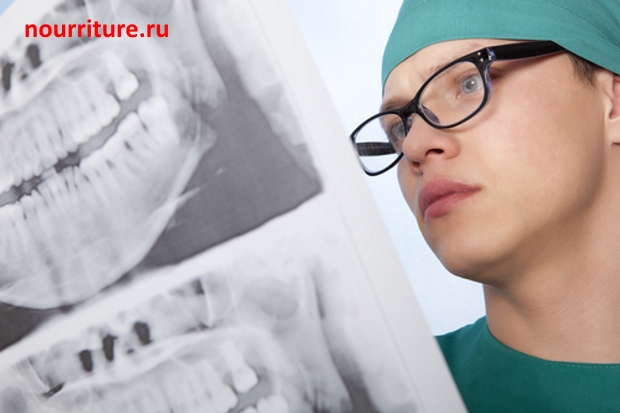List of Diseases
Jaw fracture

- damage to the jawbone with a violation of its integrity.
Etiology. Household, sports, gunshot and other injuries.
Pathogenesis . Non-firearm fractures occur but the "weak link" of the jaws. Pathological fractures are caused by chronic osteomyelitis, malignant tumor, fibrotic ostitis and other diseases.
The clinical picture is determined by pain syndrome, displacement of fragments, their mobility, changes in bite, speech and chewing disorders, and excessive salivation. When the alveolar process is broken, the defining symptom is a violation of articulation.

Etiology. Household, sports, gunshot and other injuries.
Pathogenesis . Non-firearm fractures occur but the "weak link" of the jaws. Pathological fractures are caused by chronic osteomyelitis, malignant tumor, fibrotic ostitis and other diseases.
The clinical picture is determined by pain syndrome, displacement of fragments, their mobility, changes in bite, speech and chewing disorders, and excessive salivation. When the alveolar process is broken, the defining symptom is a violation of articulation.
The course of fractures can be complicated by osteomyelitis and parotid phlegmon. The radiograph allows you to specify the location and nature of the fracture. The peculiarity of clinical manifestations is largely determined by the localization of the fracture. Gunshot fractures of the jaws have a more diverse localization, usually combined with injuries to the eyes, nose, and skull bones, accompanied by copious nasal and oral bleeding. Possible aspiration of blood, vomit, teeth and other complications (asphyxia, meningitis).

Treatment consists in comparing the fragments and fixing them. Immobilization is provided by wire dental splints, wire or polymer threads, osteosynthesis with metal rods, as well as using special devices. Wound sutured, with extensive defects impose laminar wire sutures.
Emergency care: transport immobilization, stopping bleeding, prevention of asphyxia and antishock measures. Transport immobilization is performed with a rigid chin sling. To prevent asphyxia, the patient is seated or laid on his side. If the tongue falls, then it is stitched with a ligature and fixed. If necessary, a tracheotomy is performed. It is important to provide food for the patient with liquid high-calorie food, administered with a drinking Cup or a teaspoon. To prevent the development of traumatic osteomyelitis, antibiotics are administered.
Forecast . With ordinary fractures and timely treatment, bone integrity and jaw function are restored within 3-4 weeks. Fractures of the branch, articular and temporal processes of the lower jaw are fraught with persistent functional disorders.
Forecast . With ordinary fractures and timely treatment, bone integrity and jaw function are restored within 3-4 weeks. Fractures of the branch, articular and temporal processes of the lower jaw are fraught with persistent functional disorders.
